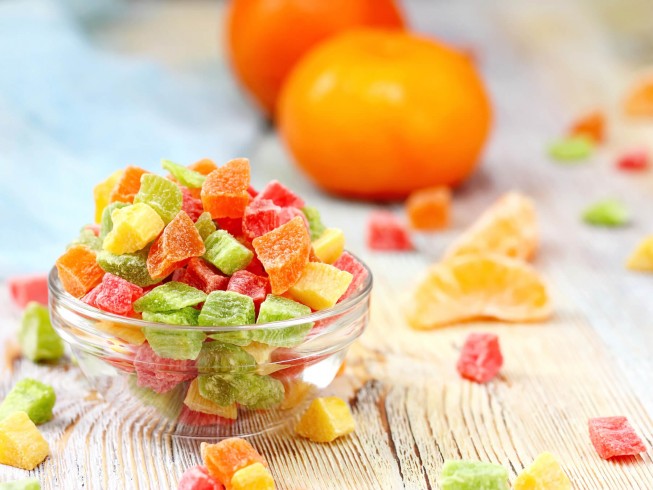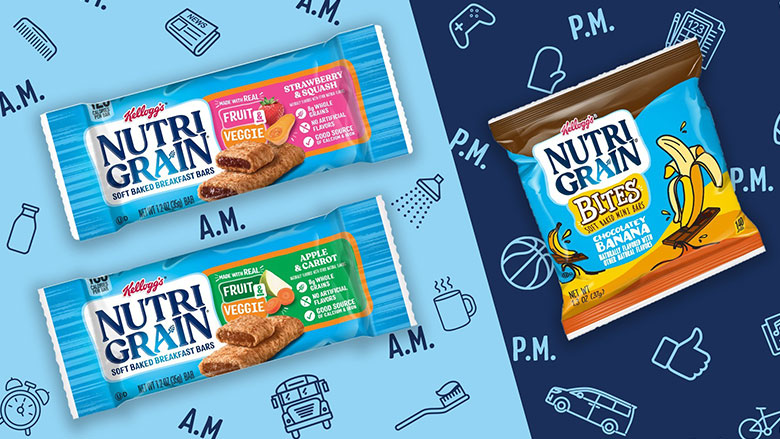1. Introduction:
Lemon meringue pie: a classic dessert cherished for its tangy lemon filling and fluffy meringue topping. But amidst its delectable allure, the question looms: Is lemon meringue pie healthy? In this article, we delve into the nutritional aspects, explore healthier recipe options, and offer tips for enjoying this beloved treat guilt-free. Discover how simple switches and mindful choices can transform this indulgence into a wholesome delight. Let’s uncover the truth and savor the sweetness without compromising on wellness.

2. Ingredients and Nutritional Information
Lemon meringue pie typically comprises three main components: the crust, the lemon filling, and the meringue topping. Let’s break down each part and examine its nutritional profile:
Crust:
Traditionally, lemon meringue pie features a buttery, flaky pastry crust made from flour, butter, and sometimes sugar. While delicious, this crust can contribute significant amounts of calories and saturated fat to the dessert. For a healthier option, consider using a whole wheat or almond flour crust to boost fiber content and reduce refined carbohydrates. Alternatively, you can explore crustless variations or opt for pre-made low-fat graham cracker crusts to cut down on preparation time and calorie intake.
Lemon Filling:
The lemon filling is typically made from a combination of lemon juice, sugar, eggs, and sometimes cornstarch for thickening. Lemons are rich in vitamin C and antioxidants, providing a refreshing burst of citrus flavor. However, the high sugar content in traditional lemon filling can pose concerns for those watching their sugar intake. To reduce sugar content, consider using natural sweeteners like honey or maple syrup, or experiment with sugar substitutes like stevia or erythritol. Additionally, incorporating Greek yogurt or silken tofu can add creaminess and protein to the filling while cutting back on the use of eggs.
Meringue Topping:
The meringue topping is made from whipped egg whites and sugar, creating a light and airy texture that contrasts beautifully with the tart lemon filling. While egg whites are low in calories and fat, the added sugar in meringue can significantly increase the calorie content of the dessert. To make a healthier meringue topping, consider reducing the amount of sugar or using alternative sweeteners. You can also experiment with aquafaba, the liquid from canned chickpeas, as a vegan-friendly substitute for egg whites.
Nutritional Information:
The nutritional content of lemon meringue pie can vary depending on portion size and recipe modifications. On average, a single slice of commercially prepared lemon meringue pie (1/6 of an 8″ pie) contains approximately 300-400 calories, with a significant portion coming from carbohydrates and fats. It’s important to be mindful of portion sizes and ingredient choices to ensure that your lemon meringue pie aligns with your dietary goals and preferences.
By understanding the ingredients and nutritional information of lemon meringue pie, you can make informed choices to create a healthier version of this beloved dessert. Experiment with alternative ingredients, portion control, and mindful preparation techniques to enjoy the delightful flavors of lemon meringue pie without compromising on your health goals.

3. Health Considerations of Lemon Meringue Pie
Lemon meringue pie, while undeniably delicious, presents several health considerations that individuals should be aware of:
1. High Sugar Content:
Traditional lemon meringue pie recipes often contain significant amounts of added sugar, both in the lemon filling and the meringue topping. Excessive sugar consumption has been linked to various health issues, including obesity, type 2 diabetes, and heart disease. It’s essential to be mindful of your sugar intake and consider alternatives to reduce the overall sugar content of the dessert.
2. High Calorie and Fat Content:
Lemon meringue pie can be calorie-dense, particularly when made with a buttery pastry crust and a generous amount of meringue topping. Consuming excessive calories and fats can contribute to weight gain and other health problems over time. Opting for lighter crust options, reducing the amount of meringue, and incorporating healthier fats can help mitigate these concerns.
3. Potential Allergens:
Lemon meringue pie contains common allergens such as eggs and gluten (found in the pastry crust). Individuals with allergies or sensitivities to these ingredients need to be cautious when consuming or preparing the dessert. Fortunately, there are numerous allergen-friendly and gluten-free alternatives available to accommodate dietary restrictions.
4. Moderation and Portion Control:
While enjoying lemon meringue pie in moderation can fit into a balanced diet, it’s crucial to practice portion control. Instead of indulging in large servings, savor a smaller portion and pair it with fresh fruit or a light salad to round out your meal. Additionally, consider sharing the dessert with friends or family to enjoy the taste without overindulging.
5. Nutrient Profile:
Despite its drawbacks, lemon meringue pie does offer some nutritional benefits. Lemons are an excellent source of vitamin C and antioxidants, which support immune health and reduce inflammation. Additionally, eggs provide high-quality protein and essential nutrients like vitamin D and B vitamins. By focusing on these nutritious components and making ingredient substitutions, you can enhance the overall healthfulness of the dessert.
6. Mindful Eating Practices:
Practicing mindful eating techniques can help you fully appreciate the flavors and textures of lemon meringue pie while being attuned to your body’s hunger and fullness cues. Slow down and savor each bite, paying attention to the sensations and satisfaction levels. By cultivating a mindful eating mindset, you can derive greater enjoyment from your dessert experiences while maintaining balance and moderation.

4. Healthy Lemon Meringue Pie Recipe
Creating a healthier version of lemon meringue pie involves making strategic ingredient substitutions and modifications to reduce sugar, calories, and unhealthy fats while preserving the delicious flavor and texture. Below is a recipe for a lighter, more nutritious lemon meringue pie:
Ingredients:
For the Crust:
- 1 1/2 cups almond flour or whole wheat flour
- 1/4 cup coconut oil or unsalted butter, melted
- 2 tablespoons honey or maple syrup
- Pinch of salt
For the Lemon Filling:
- 1 cup freshly squeezed lemon juice (about 4-5 lemons)
- Zest of 2 lemons
- 1/2 cup honey or maple syrup
- 1/4 cup cornstarch or arrowroot powder
- 4 large eggs
- 1/2 cup unsweetened almond milk or coconut milk
For the Meringue Topping:
- 4 large egg whites
- 1/4 cup honey or maple syrup
- 1/2 teaspoon cream of tartar
- 1/2 teaspoon vanilla extract
Instructions:
Prepare the Crust:
- Preheat your oven to 350°F (175°C). Grease a 9-inch pie dish with coconut oil or non-stick cooking spray.
- In a mixing bowl, combine the almond flour or whole wheat flour, melted coconut oil or butter, honey or maple syrup, and a pinch of salt. Mix until a dough forms.
- Press the dough evenly into the bottom and up the sides of the prepared pie dish.
- Bake the crust for 10-12 minutes, or until lightly golden brown. Remove from the oven and let cool completely.
Make the Lemon Filling:
- In a saucepan, whisk together the lemon juice, lemon zest, honey or maple syrup, and cornstarch or arrowroot powder until smooth.
- In a separate bowl, whisk the eggs and almond milk or coconut milk until well combined.
- Gradually pour the egg mixture into the saucepan with the lemon mixture, whisking continuously.
- Cook the filling over medium heat, stirring constantly, until it thickens to a pudding-like consistency, about 5-7 minutes.
- Remove from heat and let cool slightly.
Prepare the Meringue Topping:
- In a clean, dry mixing bowl, beat the egg whites with an electric mixer on medium speed until foamy.
- Add the cream of tartar and continue beating until soft peaks form.
- Gradually add the honey or maple syrup, one tablespoon at a time, while continuing to beat the egg whites.
- Beat until stiff, glossy peaks form, then beat in the vanilla extract.
Assemble and Bake the Pie:
- Pour the slightly cooled lemon filling into the cooled pie crust, spreading it out evenly.
- Spoon the meringue topping over the lemon filling, spreading it all the way to the edges to seal in the filling.
- Use the back of a spoon to create peaks in the meringue.
- Bake the pie in the preheated oven for 10-12 minutes, or until the meringue is lightly golden brown.
- Remove from the oven and let the pie cool completely before slicing and serving.
Tips for Success:
- Use fresh, high-quality ingredients for the best flavor.
- Adjust the sweetness of the filling and meringue to your taste preferences by adding more or less honey or maple syrup.
- Ensure that the pie is completely cooled before slicing to allow the filling to set properly.
- Store any leftovers in the refrigerator for up to 3 days.
This healthier lemon meringue pie recipe allows you to enjoy the classic flavors of this beloved dessert with fewer guilt-inducing ingredients. Experiment with different variations and adjustments to tailor the recipe to your dietary needs and preferences.

5. Tips for Making Light Lemon Meringue Pie
Creating a light and airy lemon meringue pie involves more than just following a recipe; it requires attention to detail and careful technique. Here are some tips to help you achieve the perfect balance of flavors and textures in your homemade pie:
1. Whisk Egg Whites Properly:
- When making the meringue topping, ensure that your mixing bowl and beaters are completely clean and free of any grease or residue. Even a small amount of oil can prevent the egg whites from whipping up properly.
- Start with room temperature egg whites for best results. Cold egg whites take longer to whip and may not reach stiff peaks as easily.
- Gradually add the sweetener (honey or maple syrup) to the egg whites while beating, as this helps stabilize the foam and create a glossy texture.
2. Be Mindful of Sugar Substitutes:
- If you’re using alternative sweeteners like stevia or erythritol in place of honey or maple syrup, be aware that they may affect the texture and stability of the meringue. Experiment with different sweeteners and ratios to find the right balance of sweetness and structure.
- Avoid adding sugar substitutes too quickly or in large quantities, as this can deflate the egg whites and prevent them from reaching their full volume.
3. Opt for Lighter Crust Options:
- Consider using a lighter crust option, such as a crust made from almond flour or a crustless variation, to reduce the overall calorie and carbohydrate content of the pie.
- Pre-baking the crust slightly before adding the filling can help prevent it from becoming soggy once the lemon filling is added.
4. Reduce Sugar in the Lemon Filling:
- While lemon meringue pie traditionally contains a sweet and tangy lemon filling, you can reduce the amount of added sugar by using less honey or maple syrup in the filling recipe.
- Enhance the natural sweetness of the lemon filling by using ripe, flavorful lemons and adding a touch of vanilla extract or lemon zest for extra flavor.
5. Incorporate Lighter Dairy Options:
- To lighten up the lemon filling, consider using lower-fat dairy options such as unsweetened almond milk or coconut milk instead of heavy cream or whole milk.
- Greek yogurt or silken tofu can also be used to add creaminess and protein to the filling while reducing the amount of eggs needed.
6. Bake at the Right Temperature:
- Bake the assembled pie in a preheated oven at the recommended temperature specified in the recipe. Baking at too high a temperature can cause the meringue to brown too quickly or even burn.
- Keep an eye on the pie as it bakes and rotate it halfway through if necessary to ensure even browning.
7. Allow Sufficient Cooling Time:
- After baking, allow the pie to cool completely at room temperature before slicing and serving. This allows the filling to set properly and prevents the meringue from collapsing.
- Once cooled, refrigerate any leftovers promptly to maintain freshness and texture.
By incorporating these tips and techniques into your lemon meringue pie-making process, you can create a lighter and healthier version of this classic dessert without sacrificing flavor or enjoyment. Experiment with different variations and adjustments to find the perfect balance that suits your taste preferences and dietary needs.

6. Alternatives and Modifications for Healthier Options
While traditional lemon meringue pie recipes may be indulgent, there are several alternatives and modifications you can make to create a healthier version of this beloved dessert. Here are some ideas to consider:
1. Crust Alternatives:
- Instead of a traditional pastry crust made with refined flour and butter, consider using a lighter alternative such as:
- Almond flour crust: Almond flour adds a nutty flavor and provides a boost of protein and healthy fats.
- Oat or whole wheat crust: These options offer more fiber and nutrients compared to refined flour crusts.
- Crustless option: Skip the crust altogether for a lower-carb and gluten-free alternative.
2. Sweeteners:
- Reduce the amount of added sugar in the lemon filling and meringue topping by using natural sweeteners such as:
- Honey: Provides sweetness along with antioxidants and antimicrobial properties.
- Maple syrup: Adds a rich flavor and contains minerals like manganese and zinc.
- Stevia or erythritol: Zero-calorie sweeteners that can be used in moderation to reduce overall sugar content.
3. Lighter Filling Options:
- Experiment with lighter filling options to reduce calories and fat while maintaining flavor and texture:
- Greek yogurt or coconut yogurt: Substitute part or all of the heavy cream or milk in the lemon filling with Greek yogurt or coconut yogurt for added protein and creaminess.
- Silken tofu: Blend silken tofu with lemon juice and sweetener for a creamy, dairy-free filling alternative.
4. Meringue Modifications:
- Create a lighter meringue topping by making the following adjustments:
- Use aquafaba: Aquafaba, the liquid from canned chickpeas, can be whipped into a meringue-like foam and used as a vegan-friendly alternative to egg whites.
- Reduce sugar: Gradually reduce the amount of sugar in the meringue topping or use alternative sweeteners to lower the overall calorie content.
5. Portion Control and Serving Suggestions:
- Practice portion control by serving smaller slices of pie or using mini pie tins to make individual servings.
- Pair lemon meringue pie with fresh fruit or a light salad to add fiber and nutrients to your dessert.
- Enjoy the pie as an occasional treat rather than a daily indulgence, and savor each bite mindfully.
6. Nutrient Boosters:
- Enhance the nutritional profile of your lemon meringue pie by incorporating nutrient-rich ingredients such as:
- Chia seeds: Add chia seeds to the lemon filling for added fiber, omega-3 fatty acids, and texture.
- Toasted nuts or seeds: Sprinkle toasted almonds, walnuts, or sunflower seeds on top of the meringue for crunch and extra nutrients.
7. Allergen-Free Options:
- Make allergen-free versions of lemon meringue pie by using substitutes for common allergens such as:
- Gluten-free crust: Use gluten-free flour blends or almond flour to create a crust that is safe for individuals with gluten sensitivities or celiac disease.
- Egg replacers: Replace eggs in the filling and meringue with alternatives like mashed banana, applesauce, or commercial egg replacers for vegan or egg-free options.
By exploring these alternatives and modifications, you can transform traditional lemon meringue pie into a healthier dessert option that aligns with your dietary preferences and goals. Don’t be afraid to get creative and experiment with different ingredients and techniques to customize your pie to suit your tastes and nutritional needs.

7. Related Recipes for Health-Conscious Individuals
For health-conscious individuals seeking alternatives to traditional lemon meringue pie, there are plenty of delicious recipes to explore. Here are some related recipes that offer lighter, nutrient-dense alternatives while still satisfying your sweet cravings:
1. Lemon Greek Yogurt Parfait:
- Layer tangy Greek yogurt with fresh lemon zest, honey or maple syrup, and crunchy granola for a refreshing and protein-packed dessert or snack. This parfait provides a balance of flavors and textures while offering probiotics and calcium from the yogurt.
2. Lemon Chia Seed Pudding:
- Combine chia seeds with lemon juice, almond milk, and a touch of sweetener to create a creamy and nutritious pudding. Chia seeds are rich in fiber, omega-3 fatty acids, and antioxidants, making this dessert a satisfying and healthful option.
3. Lemon Coconut Bliss Balls:
- Blend dates, almonds, shredded coconut, and lemon zest in a food processor until a sticky dough forms. Roll the mixture into bite-sized balls and chill until firm. These no-bake treats are naturally sweetened and packed with energy-boosting nutrients.
4. Lemon Blueberry Frozen Yogurt:
- Mix together Greek yogurt, fresh lemon juice, honey or maple syrup, and blueberries, then freeze until firm. This homemade frozen yogurt is a guilt-free alternative to ice cream, offering probiotics, antioxidants, and natural sweetness from the fruit.
5. Lemon Poppy Seed Muffins:
- Prepare a batch of whole grain muffins flavored with lemon zest, lemon juice, and poppy seeds. Sweetened with honey or maple syrup and moistened with Greek yogurt or applesauce, these muffins are a wholesome breakfast or snack option.
6. Lemon Ricotta Pancakes:
- Whip up a batch of fluffy pancakes made with whole wheat flour, ricotta cheese, lemon zest, and a hint of vanilla extract. Serve with fresh berries and a drizzle of honey for a nutritious and indulgent breakfast treat.
7. Lemon Coconut Chia Seed Bars:
- Combine chia seeds, shredded coconut, almond flour, lemon zest, and honey or maple syrup in a food processor, then press the mixture into a baking dish and chill until set. These no-bake bars are perfect for on-the-go snacking and provide a boost of fiber and healthy fats.
8. Lemon Avocado Smoothie:
- Blend together ripe avocado, frozen banana, spinach, lemon juice, and almond milk for a creamy and nutrient-rich smoothie. Avocado adds healthy fats and creaminess, while spinach provides vitamins and minerals for a refreshing and satisfying beverage.
9. Lemon Coconut Energy Bites:
- Combine rolled oats, almond flour, shredded coconut, lemon zest, and dates in a food processor until a sticky dough forms. Roll the mixture into balls and coat with additional shredded coconut. These energy bites are perfect for pre or post-workout snacks.
10. Lemon Berry Quinoa Salad:
- Toss cooked quinoa with fresh berries, lemon zest, mint leaves, and a drizzle of honey or maple syrup for a light and refreshing salad. Quinoa provides protein and fiber, while berries offer antioxidants and natural sweetness.
These related recipes offer a variety of options for health-conscious individuals to enjoy the bright and zesty flavors of lemon in nutritious and satisfying ways. Whether you’re craving a light snack, indulgent dessert, or wholesome meal, there’s a lemon-inspired recipe to suit your tastes and dietary preferences. Experiment with different ingredients and variations to discover your favorite healthy lemon treats.
8. Reader Engagement: Comments and Ratings
Engaging with readers through comments and ratings is an essential aspect of creating a dynamic and interactive online community around your article on lemon meringue pie. Here’s why reader engagement matters and how to encourage it effectively:
1. Foster Community Interaction:
- Comments sections provide a space for readers to share their thoughts, experiences, and recipe adaptations related to lemon meringue pie. By fostering a sense of community, you can create a supportive environment where readers feel comfortable interacting with each other and the content creator.
2. Receive Feedback and Suggestions:
- Encouraging readers to leave comments allows you to receive valuable feedback on your article and recipes. Whether it’s praise for a delicious recipe or suggestions for improvements, reader comments can help you understand your audience’s preferences and tailor future content accordingly.
3. Answer Questions and Provide Support:
- Readers may have questions about the recipes, ingredients, or cooking techniques mentioned in your article. Engaging with comments allows you to provide helpful answers, clarification, and support to your audience, enhancing their overall experience and understanding.
4. Build Trust and Credibility:
- Actively engaging with reader comments demonstrates your commitment to transparency, authenticity, and customer satisfaction. By responding thoughtfully and respectfully to feedback, you can build trust and credibility with your audience, encouraging repeat visits and loyalty.
5. Encourage Positive Interaction:
- Set the tone for constructive and respectful dialogue by leading by example in your responses to reader comments. Encourage positivity, gratitude, and helpfulness among commenters, and moderate the discussion to maintain a welcoming and inclusive atmosphere.
6. Prompt Action with Calls to Action:
- Encourage reader engagement by including calls to action (CTAs) throughout your article, inviting readers to leave comments, share their thoughts, or ask questions. For example, you could end each recipe with a CTA inviting readers to share their own variations or tips.
7. Monitor and Moderate Comments:
- Regularly monitor comments to ensure that discussions remain respectful, on-topic, and free from spam or inappropriate content. Set clear guidelines for acceptable behavior and moderation policies, and enforce them consistently to maintain a positive comment section environment.
8. Showcase Reader Contributions:
- Highlight reader comments, questions, and recipe adaptations in future articles or social media posts to acknowledge and celebrate reader contributions. This not only validates reader engagement but also fosters a sense of community and connection with your audience.
In summary, reader engagement through comments and ratings is a valuable component of creating an interactive and vibrant online community around your article on lemon meringue pie. By fostering dialogue, providing support, and encouraging positive interaction, you can enhance reader satisfaction, build trust and credibility, and create a more enriching and enjoyable reader experience overall.
In conclusion
while traditional lemon meringue pie may not align with everyone’s health goals due to its high sugar and calorie content, there are countless ways to adapt this beloved dessert to fit a healthier lifestyle. By incorporating smart ingredient substitutions, portion control, and mindful eating practices, individuals can indulge in the delightful flavors of lemon meringue pie without sacrificing their well-being. This article has provided insights into the nutritional considerations of lemon meringue pie, offered tips for creating lighter versions, and introduced a variety of related recipes for health-conscious individuals to explore. With a commitment to balance and creativity in the kitchen, anyone can enjoy the sweet satisfaction of dessert while supporting their overall health and happiness. Let this be an invitation to embrace the joy of wholesome indulgence and embark on a journey of culinary discovery, one delectable bite at a time.
FAQs
Is it safe to eat lemon meringue pie?
Lemon meringue pie is generally safe to eat when prepared properly. However, individuals with specific allergies or dietary restrictions should be cautious and check the ingredients to ensure there are no adverse effects.
Does lemon meringue pie have a lot of fat?
Lemon meringue pie typically contains moderate amounts of fat, primarily from ingredients like butter and egg yolks in the filling, and possibly added fats in the crust. However, portion size and ingredients used can affect the overall fat content.
How healthy is meringue?
Meringue, made primarily from egg whites and sugar, is relatively low in fat and can be a healthier alternative to richer dessert toppings. It’s low in cholesterol and can provide a source of protein, but its high sugar content means it should be consumed in moderation as part of a balanced diet.
How much sugar is in lemon meringue pie?
The amount of sugar in lemon meringue pie can vary depending on the recipe and preparation method. Typically, it contains a significant amount of sugar due to the sweetening of both the lemon filling and the meringue topping. Moderation is key when consuming desserts with high sugar content.
What are the effects of lemon meringue?
Lemon meringue pie can evoke various effects, both gustatory and emotional. Its tangy lemon filling paired with the sweet, airy meringue creates a delightful contrast of flavors and textures. Additionally, the nostalgia associated with this classic dessert can evoke feelings of comfort and happiness for many people. However, overconsumption may lead to feelings of heaviness or guilt, emphasizing the importance of moderation in enjoying this treat.



Pingback: Explain Healthy vs Unhealthy ISTP Dynamics